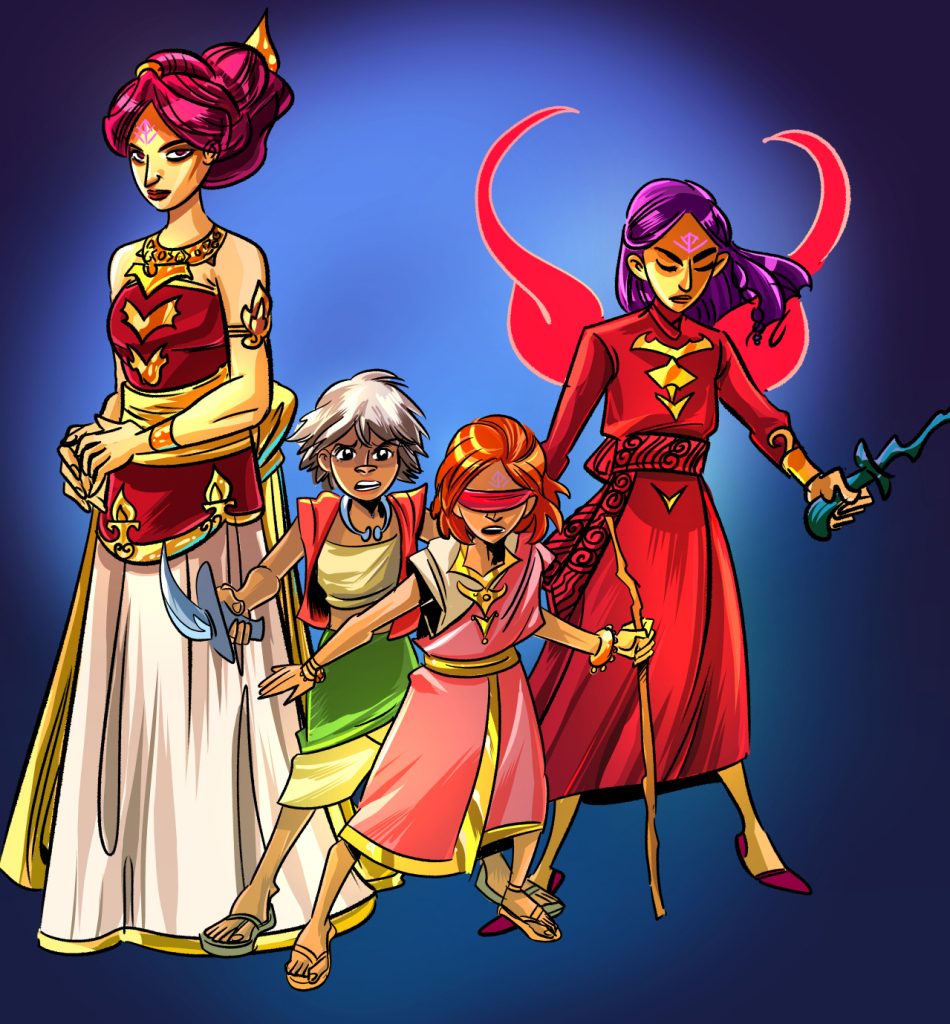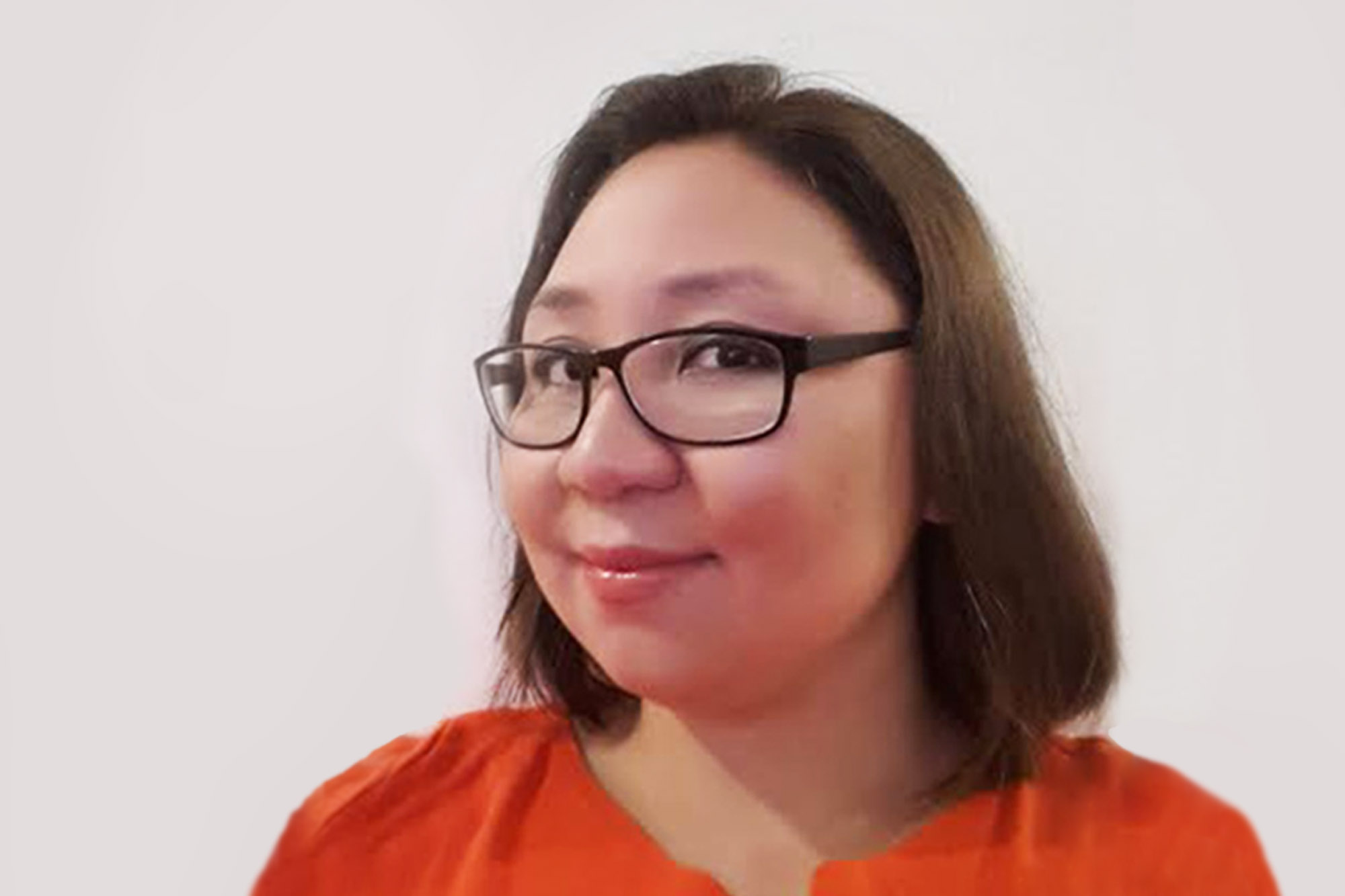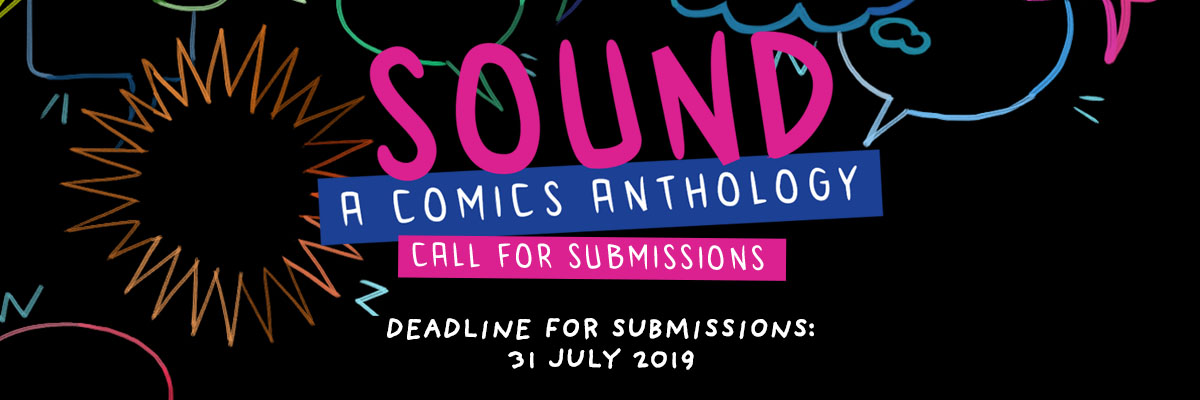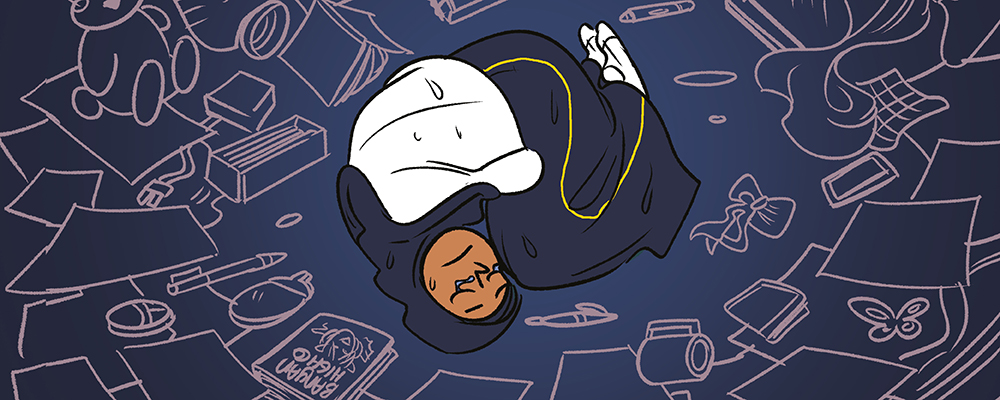Comics artist Tintin Pantoja is based in Manila, Philippines. She illustrated the graphic novel Who is AC? written by Hope Larson and is working on several others including Unplugged and Unpopular with Mat Heagerty. Here she will be discussing tools, tales and the Southeast Asian publishing scene.
Can you name us some of your best loved comics/books?
Tintin: Hello! I’m glad you asked! There are almost too many comics to mention that I love! I grew up reading X-Men by Chris Claremont, Archie comics, and the Tintin comics by Hergé, of course! That, plus shojo manga by Yuho Ashibe (author of Bride of Deimos and Crystal Dragon) and Riyoko Ikeda (Rose of Versailles). They are my absolute favourite books – all tales of adventure, fantasy, and comedy.
What are your favourite drawing tools?
Tintin: I usually work on a computer with a Huion drawing screen tablet, but I love working with fountain pens, brush pens, and Bristol paper. I used to work with Raphael brushes and India ink, but it became too messy and unwieldy. Oh, I could go on and on about supplies and stationery!

Tintin’s redraw of the characters from Who is AC, in her current style.
Do you have a favourite colour you like to use, or a favourite subject you like to draw?
Tintin: I love to doodle using pink and red colours. I use fountain pens, so my go-to inks are J. Herbin Rouge Hematite, a very bright intense red, and Iroshizuku Tsutsuji, a bright pink. I find that these colours help stimulate my brain. I love drawing people in cool clothes and costumes. And I like drawing actions – my style is exaggerated and cartoony, and action is an important part of it.

Fan art of characters from Valiant High (by Valiant Comics).
Do you have any drawing habits that you’d like to share with us?
Tintin: Well, I like to sit down in a café with just myself, my headphones, and my notebooks for three hours with a good cup of coffee to brainstorm. It usually takes me one hour of mindless doodling before I start to come up with interesting ideas. It’s a sort of ritual: the coffee, the doodling, the music, and finally, the creative breakthrough! It doesn’t always work out, but I always end up having fun and relaxing.
Which step of the comic-making process do you do you find the hardest?
Tintin: Each step of making comics has its own challenges. I find that it’s hard to start plotting the pages – doing thumbnails, that is – when you design the overall look of the pages and how each panel flows into the next. That’s when you really have to think and concentrate and do everything over, lots of times.
Do you find that your cultural background and experiences influence your art?
Tintin: Since I grew up in Indonesia and the Philippines, I do find that I have been influenced by their comics and cultures. It’s very subtle, however. I think both countries are still trying to find their own comic styles, still experimenting and being influenced by foreign styles. In that sense, my artistic influences are also a hodgepodge – a bit of manga, a dash of Archie by Dan DeCarlo, and little bit of this and that.
I also try to create stories and characters that are set in some version of Southeast Asia. I think it’s important to create stories about people from cultures you are familiar with, especially if you come from a culture that hasn’t been represented in comics too often.

Characters from Unicorn Sword, a graphic novel that Tintin is working on.
As a Filipino/Southeast Asian comic creator, what kind of stories would you like to see from your region?
Tintin: I would like to see more stories that break through pre-existing commercial formulas, such as superheroes or shonen/shojo templates, and try to explore unique and personal elements. Whether it’s fantasy or speculative or realistic or non-fiction, I want to see a surprising view of the world. It doesn’t have to be all local mythology either! It just has to surprise.
What are some challenges that Southeast Asian creators face? Is there a common misconception you’d like to dispel?
Tintin: There are several challenges facing Southeast Asian creators. The major one is the fact that we all have much smaller comic markets than countries like the US, Japan, or even Korea, Taiwan, and China. The audience is smaller too. Creators are faced with the challenge of supporting themselves with their work. The internet has helped somewhat, and now more Southeast Asian creators have access to other audiences…but the internet also facilitates comics piracy. When you can read a comic online, for free, it’s harder to motivate people to buy them and support creators.
Another related problem is language. Since Southeast Asian countries each have their own languages, it’s harder to publish across countries – unless you translate them for local readers, which would make them cost more. I think this is changing with the increased use of English in the region, but we still have some ways to go.
Yet another problem is the prevailing view that comics are just for kids. This limits the types of comics that can be published and the lack of mature works would reinforce the stereotype.

Characters from an old personal story.
What would you say to those who say “comics are just for kids”, or the opposite, “comics are not good for kids”?
Tintin: Comics teach visual literacy, communication, storytelling, and artistic principles. I think they’re just as good for kids as any other artistic medium, such as painting, music, or even video games (however I don’t think they’re as addictive as the latter, unless you become a comic creator, ha-ha!). They’re a fantastic way to disseminate information.
I do think we’ve evolved beyond the “comics are just for kids” argument with works for mature audiences in Japan, France, Italy, the US, etc, but it’s the prevailing view in the region here…amongst non-comics readers. Most comic readers know that there’s a wider variety of material out there. I would tell someone who expressed this idea to have a look at what’s being published right now. The Philippines, for one, is gearing toward mature works.
If you could meet a writer or artist, who would it be and what would you ask them?
Tintin: Is it strange to say that I like to keep my comic heroes at bay because I put them on a pedestal? That being said, I met one of my favourite comic artists, Carla Speed McNeil, at a convention once. She was incredibly clever, witty, and articulate. That was amazing! I would love to have a detailed conversation with her about how to craft compelling stories.
I would also love to talk to Japanese mangaka and editors about their manner of storytelling. I have a huge respect for their fascinating ability to keep a narrative going over hundreds of pages and dozens of volumes.
Who is your favourite character in the entire multiverse?
If I had to choose one, I love reading about Gintoki Sakata from the manga Gintama. He’s lazy, has a messy perm, and he can be a jerk, but in the end he always does the right thing by his friends. I love characters who aren’t perfect – it’s the flaws that make them fun!


![[OPEN CALL] DELAY: A Comics Anthology](https://differenceengine.sg/wp-content/uploads/2024/02/Delay-header-web.jpg)



